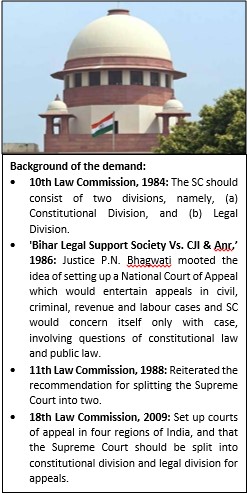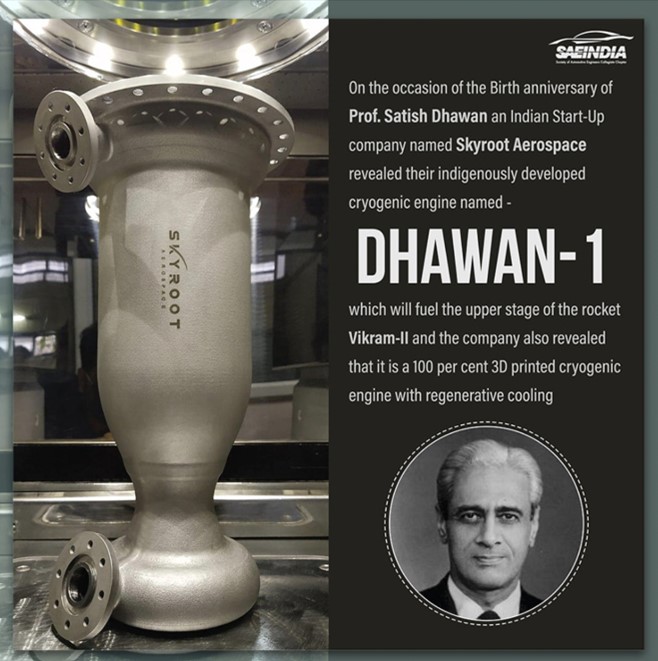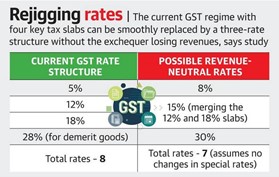Thursday, 2nd December 2021
Digital Address Code
In News
The Department of Posts is in the process of creating the Digital Address Code (DAC) for each address in the country.
Need for DAC
- Difficulty in delivering to the exact location: With the increase in online business transactions, it is cumbersome to reach the addressee by means of conventional addresses and landmarks.
- Proof of Address: Currently, Aadhaar is commonly used as a proof of address. But the address mentioned on the Aadhaar card cannot be digitally authenticated.
- Fake addresses: Use of fake addresses is at the root of eCommerce customer frauds. There is a need for verified addresses linked to geospatial coordinates that can be authenticated online.
- Uniqueness of address: Descriptive addresses are not always unique, and reaching such places becomes difficult.

Attributes of DAC
- The digital address is a feature of the physical address. The same address could be associated with multiple addressees i.e., Digital Address would enable locating an address, not addressee.
- DAC would be linked to geospatial coordinates representing the address. Coordinates at the entrance or gate to the address would represent the address for this purpose.
- In respect of sensitive establishments whose geospatial coordinates should not be disclosed, DAC may not be issued or it may be linked to the coordinates of a 'neighborhood' or city.
- DAC would be unique for each address. "Address" would mean each individual dwelling unit or office or business. E.g., In an apartment building, each apartment will be allotted a unique DAC.
- DAC would be permanent for each address. If the property representing the address gets mutated into multiple addresses each of the new addresses would be allotted new DAC.
- Changeable parameters like street numbers/ names, colony names etc. would not become a part of the Digital Address.
- DAC is proposed to be a numeric or an alphanumeric code.
Benefits of DAC
- Address authentication could be provided as online service. It would be an important step forward in Ease of Living, KYC verification process etc.
- DAC would lead to higher productivity and quality of service in delivery services, especially eCommerce.
- Adoption of DAC would lead to increased financial and administrative efficiencies across sectors like property taxation, emergency response, disaster management etc.
- DAC would simplify delivery and implementation of Government Schemes.
Where can it be used?
- New Initiative, Postal address, Digitization, Digital India
Sources:
Poshan Abhiyan Programme
In News
According to the recent data released by the Ministry of Women and Child Development (WCD), funds released under the Poshan Abhiyan Programme is found to be severely under-utilised.
About the News
- Out of the 36 states and UTs for which the ministry has released data, no state or UT has completely used its funds for Poshan Abhiyan-the scheme launched to curb malnutrition in the country.
- It noted that states like West Bengal, Uttar Pradesh, Madhya Pradesh and Rajasthan have either utilized meagre amount from their funds or have not utilized their funds at all.
Poshan Abhiyan
- Scheme to improve nutritional income: The Prime Minister’s Overarching Scheme for Holistic Nourishment (POSHAN Abhiyaan), or the National Nutrition Mission, is the Government of India’s flagship programme to improve nutritional outcomes for children, pregnant women and lactating mothers.
- Mission-mode scheme: Launched in 2018, the POSHAN Abhiyaan strives to reduce the levels of stunting, undernutrition, anaemia (among young children, women and adolescent girls) and reduce low birth weight.
- Targets: Although the target to reduce stunting is atleast 2% p.a., the mission would strive to achieve reduction in Stunting from 38.4% (NFHS-4) to 25% by 2022.
- Financial Backing: The scheme is funded by Government Budgetary Support (50%) and 50% by International Bank for Reconstruction and Development (IBRD) or other multilateral development bank (MDB).
- Government budgetary support would be 60:40 between Centre and States/UTs, 90:10 for NER and Himalayan States and 100% for UTs without legislature.
- Need for POSHAN Abhiyaan: There are a number of schemes directly/indirectly affecting the nutritional status of children (0-6 years age) and pregnant women and lactating mothers. Despite these, the level of malnutrition and related problems in the country is high as there is lack of synergy in linking the schemes with each other to achieve the common goal. NNM through robust convergence mechanism and other components would strive to create this synergy.
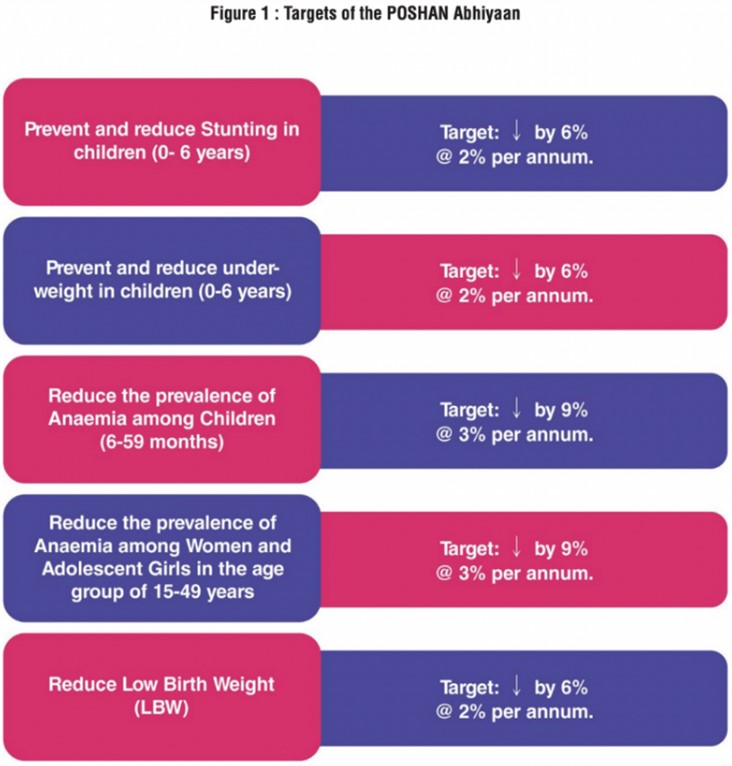
Where can it be used?
- Malnutrition, POSHAN Abhiyan, Health GS Paper 2
Source:
- Funds for malnutrition scheme under-utilised: data
- Accelerating progress on Nutrition in India
- Cabinet approves setting up of National Nutrition Mission
Image Source:
Common entrance test for central varsities
In News
The University Grants Commission (UGC) has called for a common entrance test for admissions to undergraduate and postgraduate courses in Central universities across India from the academic session 2022-23.
Background
- The Central Universities Common Entrance Test (CUCET) was launched in 2010.
- In 2021-22, 12 central universities held CUCET, organized by the National Testing Agency (NTA), under the Ministry of Education.
- The UGC has been keen on bringing more central universities under the ambit of the CUCET ever since it was envisaged in the National Education Policy (NEP) 2020.
- However, it was put on hold in view of the challenges posed by the Covid-19 pandemic.
Rationale and Need for this Move by UGC
- Test conceptual knowledge: The NEP, 2020 envisages that a common entrance will test the conceptual understanding and ability to apply knowledge.
- Elimination of coaching: It will aim to eliminate the need for taking coaching for these exams.
- Reduce the burden: Common entrance exams will reduce the burden on the entire education system rather than each university devising their own entrance exams.
- Common ground: The higher-scoring science stream students get an edge in admissions to the universities; however, the new aptitude test will provide a common ground for everyone.
- Need for alternatives: unrealistic cutoffs for admission to premier institutions like Delhi University have underlined the need for alternatives.
- Choosing subjects of their choice: To remove the strict compartmentalization of Arts, Science and Commerce, so that students can choose subjects based on their interests.
Criticism
- Common entrance not an improvement: Though the existing board-exam based screening is leading to unrealistic cut-offs, but a common entrance will not be an improvement.
- Additional burden for disadvantages backgrounds: Common entrance will encourage the coaching industry and put additional burden on parents and students coming from disadvantaged backgrounds.
- Autonomy of universities. It will affect universities offering highly specialized as well as multidisciplinary courses.
- Discrepancies of the boards: The controversy around Board marks will still continue even if its weightage is reduced as per the 50-50 formulae. There will still be some Boards scoring better than others which will create discrepancies
Where can it be used?
- University, UGC, Education, GS Paper 2
Sources:
National Pollution Control Day
National Pollution Control Day is observed on December 2 to instil awareness among people about environmental pollution and its disastrous consequences. The National Pollution Control Day is observed every year on this day in remembrance of those who lost their lives in the Bhopal Gas tragedy when the deadly gas methyl isocyanate leaked out of the Union Carbide plant on the intervening night of December 2-3 in 1984. The National Health Portal of India data reveals that around 7 million people die every year due to air pollution. The data also reveals that nine out of ten people globally do not have access to clean and safe air.
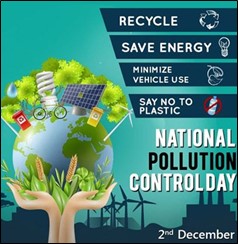
Source:
Digital Public Goods (DPG)
In News
UNDP has recently joined the Digital Public Goods Alliance to accelerate inclusive digital transformation.
Background
- The number of internet users has grown from barely 413 million people in 2000 to over 4.9 billion at present. Social media was almost unheard of at the turn of the century; currently, 4.5 billion people are active users.
- With key services such as education and health, relief delivery, government communications, and citizens’ transactions like bill payments being increasingly disseminated digitally in many countries, DPG has become an inevitable attribute of the future.
What is DPG?
- The UN Secretary General’s Roadmap for Digital Cooperation defines digital public goods as: “open source software, open data, open AI models, open standards and open content that adhere to privacy and other applicable laws and best practices, do no harm, and help attain the SDGs.”
- The basic traits of DPG include
- DPG are goods with benefits that potentially extend to all countries, people, and generations.
- They are public in the traditional economic sense as opposed to private; and global as opposed to national.
- Similar to public goods, DPG are non-rivalrous and non-excludable.
- Example: District Health Information Software 2 (DHIS2) which was first created in post-Apartheid South Africa to address gaps in health data collection, access, and use at the local level. Today it is the world’s largest health management information system platform, managed by the University of Oslo, Norway, and is used in 73 low and middle-income countries representing 30% of the world’s population.
India’s DPG Model: IndiaStack
- IndiaStack – a set of open, modular, interoperable protocols, building blocks allow governments, businesses, startups and developers to utilise a unique digital infrastructure to solve India’s hard problems.
- Core part of the India Stack: Aadhaar Authentication, Aadhaar e-KYC, eSign, Digital Locker, Unified Payment Interface (UPI) and Digital User Consent.
- The base of this is a biometric identity, connected to bank accounts through which citizens receive services and subsidies, from pensions to remittances, licences to food rations. The identity stores the digital records –but consent of sharing data lies with the individual.
- It’s been tested during the pandemic across India’s vast, diverse population, and at continental scale – with food rations for migrant workers, vaccines taken and digital certificates provided.
Utility of the DPG architecture
- Financial inclusion and integration through JAM trinity: It was made possible by using publicly owned, regulated technology frameworks that are accessible to private developers in an organised fashion with the open-API frameworks. Open access has encouraged competition and spurred innovation and investments.
- Relief during Pandemic: During the pandemic and national lockdowns, IndiaStack received further validation. The Indian government delivered relief support directly to 420+ million beneficiaries via DBT, including farmers, women Jan Dhan account holders, and other disadvantaged groups.
- Post Covid Recovery: DPGs will have immense feed forward effects for the economy, especially in the post-COVID-19 recovery trend line. McKinsey Global Institute’s report ‘India’s turning point’ concludes “financial-sector reforms and streamlining resources can deliver $2.4 trillion in
investment while boosting entrepreneurship by lowering the cost of capital for enterprises by about 3.5 percentage points”. - Citizens: Brings millions of Indians into the formal economy by reducing friction.
- Software ecosystem: Fosters innovation to build products for financial Inclusion, healthcare & educational services at scale.
- Government: Brings a paradigm shift in the way government services are delivered in a transparent, accountable and leakage free model.
- Role of DPGs for sustainable development: DPGs support sustainable development in multiple ways. They enable knowledge and data sharing and reduce duplication in the development system and beyond. They also play a significant role in accelerating digital transformation in low and middle-income countries.
Push for Digitisation and challenges in securing DPG
The pandemic is making clear that Digitalization will power the developing world out of an economic crisis. Four reasons for this is that
- The pandemic has accelerated economic reforms in many developing countries
- Social distancing has accelerated the adoption of Digitalization by governments, companies, consumers, educational institutions and NGOs
- The decreasing cost of technology and prediction makes it accessible and possible
- Platforms are the new institutions – now easier to build and participate in.
However, there are some challenges. Digitalization is still fundamentally different in developed and developing countries.
- First,there’s a difference between “access” and “usage” of technology. The developed world issue is ‘usage’ i.e. consumer privacy, security, data protection, productivity. The developing world needs “access” – digital availability, digital literacy skills, and lack of local language content, affordability and usage of infrastructure.
- Second,there’s a “hard” and “soft” infrastructure gap – “Hard” includes devices, electricity, telecom, servers, data centres; “Soft” includes digital platforms, content, patent and IPR issues, legal and policy measures across value-chains. The developing world lacks both.
- Third,the world is tied down to three approaches: proprietary digital platforms owned by a few private players e.g., Google, Amazon; a government mandated system; and a broad regulation for consumers disconnected from their needs.
Policy Solutions
- Building public data pools: Digitising and annotating existing public data across sectors, especially, social sectors such as health, and opening up such public data for open public use in a machine readable form is an important step. This can lay the foundation for startups and enterprises to build applications and services.
- Adopting a mixed data economy ownership regime where State agencies will have the powers to create public data pools and regulate its usage and access. Private firms may be asked to relinquish their exclusive rights over data of national importance collected and processed as part of their business.
- Putting in place a strategic framework to govern cross-border transfers of data: Jurisdictional sovereignty over data resources, including the right to institute data localisation measures as per strategic economic considerations, is a cornerstone principle for governments. Developing countries need to preserve this space in trade policy negotiations.
- Introducing public interest exemptions in AI patent licensing: FRAND (Fair, Reasonable and Non-Discriminatory) licensing and compulsory licensing conditionalities for AI innovation can go a long way in enabling developing countries leapfrog current development trajectories.
- Recovering the public utility character of essential platform infrastructure to curb the risks of privatisation of essential platform infrastructure.
Conclusion: Democratising technology with the five foundational attributes of universal access, bias towards inclusion, sacrosanct rights, direct recourse to the law, and continuous innovation, is essential to uphold universality of DPG. Several emerging DPG platforms such as the Digital Public Goods Alliance and Global Data Access Framework etc. are working towards this aim. IndiaStack also presents a good learning for the world.
Question: Define Digital Public Goods. Discuss India’s achievements in securing a model for DPG to be replicated across the world.
Where can it be used?
- Public goods, Digitization, Digital India, Economy, GS Paper 3
Sources:
- Democratising Technology for the Next Six Billion: India’s ‘Digital Public Goods’ Innovation
- Digital Public Goods. A Precondition for Realising the SDGs
- Digital Public Goods
- Digital Public Goods
- Fast-Tracking Development: A Building Blocks Approach for Digital Public Goods
- India as a startup nation is built on the foundation of its digital public goods
- Making digitalization a public good
- Road map for digital cooperation: implementation of the recommendations of the High-level Panel on Digital Cooperation
Ultra-hot Planet
This is image of newly discovered “ultrahot Jupiter”, which has the shortest orbit of any known gas giant. Astronomers have discovered one of the most extreme ultrahot Jupiters — a gas giant that is about five times Jupiter’s mass and blitzes around its star in just 16 hours. The planet’s orbit is the shortest of any known gas giant to date. Due to its extremely tight orbit and proximity to its star, the planet’s day side is estimated to be at around 3,500 Kelvin, or close to 6,000 degrees Fahrenheit — about as hot as a small star. This makes the planet, designated TOI-2109b, the second hottest detected so far. Judging from its properties, astronomers believe that TOI-2109b is in the process of “orbital decay,” or spiraling into its star, like bathwater circling the drain. It’s extremely short orbit is predicted to cause the planet to spiral toward its star faster than other hot Jupiters.

Source:
Garima Greh
- Context: Ministry of Social Justice & Empowerment has launched a ‘National Portal for Transgender Persons’ and inaugurated Garima Greh recently.
- Garima Greh is a shelter home for transgender persons that houses them with basic amenities like shelter, food, medical care and recreational facilities.
- It will also provide support for the capacity-building/skill development of persons in the Community, which will enable them to lead a life of dignity and respect.
- These pilot shelter homes are located in States of Maharashtra, Gujarat, Delhi, West Bengal, Rajasthan, Bihar, Chhattisgarh, Tamil Nadu and Odisha.
- The National Portal for Transgender Persons would help the transgender person in applying for a Certificate and Identity card digitally from anywhere in the country, get the I-Card without any physical interface, without having to visit any office, monitor the status of their application and ensure the transparency in the process.
- These initiatives have come in the backdrop of The Transgender Persons (Protection of Rights) Act, 2019 that came into effect in 2020.
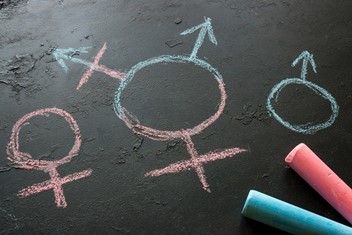
Source:
- Shri Thaawarchand Gehlot E-Launches ‘National Portal for Transgender Persons’ and E-Inaugurates Garima Greh: A Shelter Home for Transgender Persons in Gujarat
- GARIMA GREH FOR TRANSGENDERS
Image Source:
Project SWADESH
- Context: DBT-National Brain Research Centre (DBT-NBRC) have recently developed project SWADESH.
- It is a unique brain initiative focusing on certified neuroimaging, neurochemical, neuropsychological data and analytics that are made accessible to researchers for managing brain disorders.
- It is the first large-scale multimodal neuroimaging database designed specifically for Indian population with big-data architecture and analytics for various disease categories namely neurodegenerative, neuropsychiatric (schizophrenia and bipolar disorder), neurodevelopmental (autism and epilepsy), COVID-19-related disorders and other disorders.
- SWADESH is supported by JAVA-based workflow environment and Python.
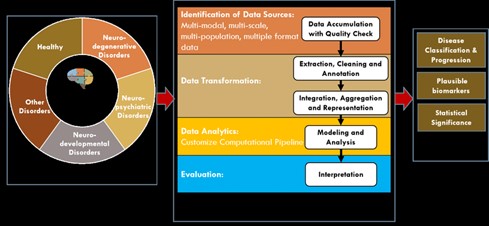
Source:
Barbados – the world’s newest republic
- Context: Barbados has become the world’s newest republic after 400 years of being a British colony.
- Barbados is located in the Caribbean Region of the North Atlantic Ocean. As an island in the Lesser Antilles, Barbados is a country in the West Indies.
- Barbados, which is said to have been made a ‘slave society’ by the British, first became an English colony when a ship arrived at the Caribbean in 1625.
- On November 30, 1966, Barbados gained its independence.
- However, it will continue to be one of the 54 Commonwealth nations.
- Formerly known as the British Commonwealth, the Commonwealth of Nations is a loose association of former British colonies and current dependencies, along with some countries that have no historical ties to Britain.
- The terms “royal” and “crown” would be dropped from all official references, for instance, Royal Barbados Police Force will become Barbados Police Force and crown lands would become state lands.
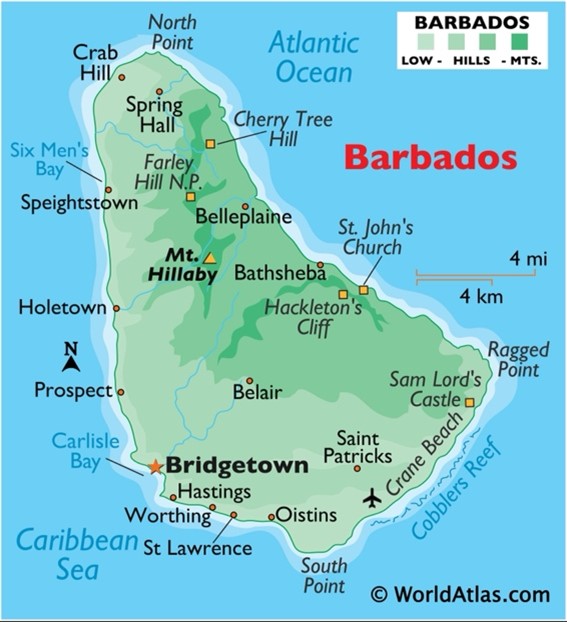
Source:
- Explained: Barbados – the world’s newest republic
- Barbados parts way with Queen and becomes world’s newest republic
- Where is Barbados in the World?
Image Source:
Green Cement
- Context: Reduction of GHG and conventional cement in industries to reach net-zero targets discussed in COP 26.
- Green cement is a form of cement produced with the help of a “carbon-negative manufacturing process.”
- In other words, cement produced as the final product of a technologically advanced process, such that emissions during unit operations (like clinker production) are minimized, is referred to as green cement.
- Green cement is an eco-friendly product which resolves serious environmental issues and minimizes the carbon footprint of cement production.
- Green cement making reduces cement intake, and its major raw materials include discarded industrial wastes like blast furnace slag and fly ash.
- The carbon dioxide emitted during the manufacturing process is significantly reduced by about 40% at the same time maintains the cement strength.
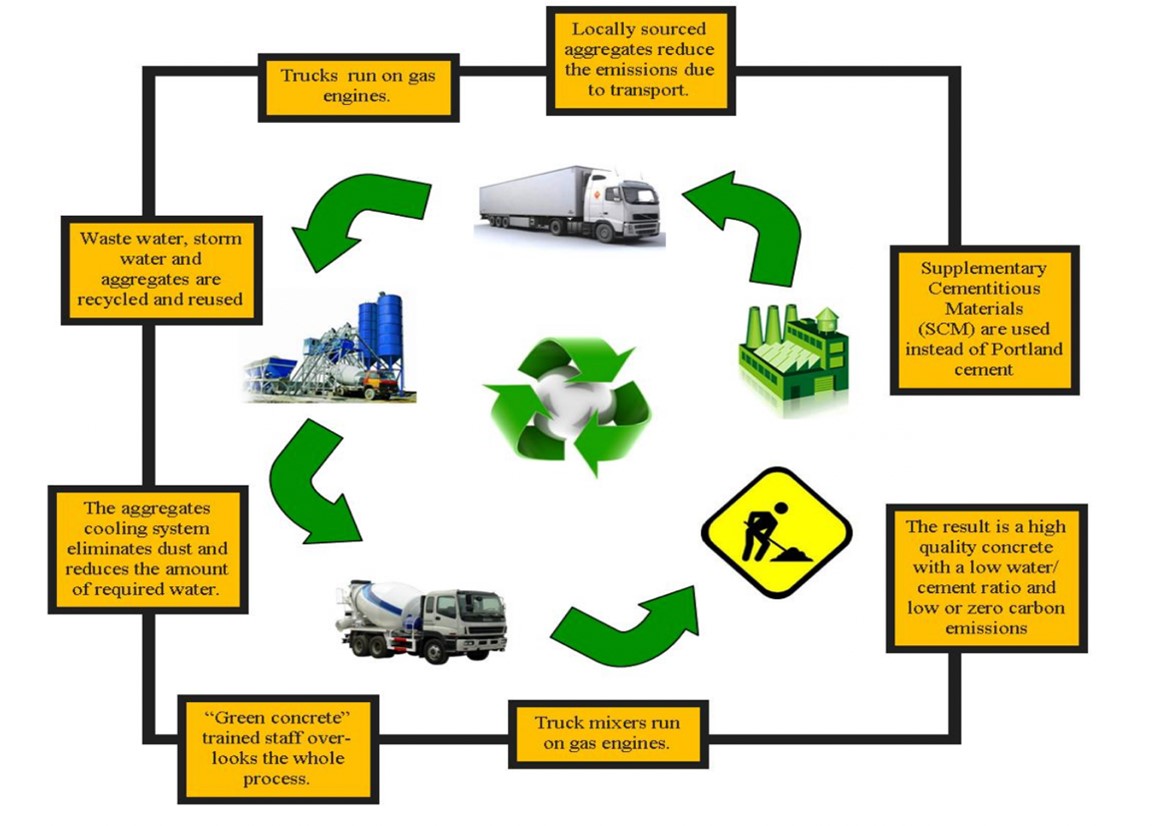
Source:
Image Source:
Reform the WTO, do not deform it: HBL
Essence: The article revolves around the need to reform the WTO and agendas of developed and developing nations attached to it. With two of the documents from developed nations available in public, it provides what developed nations and specially European Union expects from the reforms. Some of the major expectations involves revitalizing the negotiating process along with change in how the committees at WTO functions and new approach to special and differential treatment of developing countries.
It seems that in the name of institutional reform, the developed countries are seeking to acquire almost unfettered rights to decide the issues further marginalizing the voice and role of developing countries. The process of WTO should be such that keeps the development at its core, promote inclusive growth, and fully take into account the interests and concerns of developing countries.
Why you should read this article?
- To understand the agenda of developed countries behind the reforms of WTO.
- To understand how the reforms suggested by them could further marginalize the interest of the developing nations.
Source:
The centrality of the Arctic in the India-Russia partnership: HT
Essence: The article highlights the unmatched complementaries that Arctic and Far East area provides for Russia and India. The article sets the context for Russian President’s visit to India and the things both the countries should focus on. As Arctic region is of great importance to Russia for its strategic resource base, it serves the same for India for its transition from fossil fuel to cleaner energy sources.
Russia could also leverage on India’s hydrographic capacity and skilled seafarers for developing its northern sea routes and exploring through it. Entering into agreements with Russia would depict India as a confident country willing to explore creative diplomatic pathways for its development.
Why you should read this article?
- To understand the intricacies of upcoming visit of Russia’s President to India.
- To understand the agendas that should form the area of negotiations for both the countries.
- The article with provide important points for writing an answer on India-Russia bilateral ties. GS-2.
Source:
Small grants but a big opportunity for local bodies: TH
Essence: The health grant of Rs 8,543.92 Crore to urban and rural local bodies, on the recommendation of 15th Finance Commission has great significance for the Primary Health Care System in India. The responsibilities to deliver Primary Health Care services was transferred to local bodies. But this didn’t turn out to be successful especially in Urban areas. The National Health Mission was launched to bolster health care system, but the National Urban Health Mission (NUHM) was launched late as compared to NRHM with a meagre financial allocation.
Urban areas have shortage of primary health care infrastructure and services. Along with it, regular outbreak of diseases, the situation created by COVID 19, insufficient funding, lack of co-ordination among agencies etc are some other obstacles. Some essential steps which should be taken include sensitization of stake holders, raising responsibilities of local bodies, opening more community clinics, developing innovative health models etc. Local bodies should step up in their own health spending. This opportunity provided by the 15th Finance Commission shouldn’t be missed.
Why to read this article?
- To understand that the health grant on the recommendation of 15th Finance Commission has great potential for the primary health care system.
- To know the reasons why did the previous efforts fail in the primary health sector and what are the current obstacles mainly related to urban areas.
- To list out few steps required to improve the primary health care system so that the opportunity provided by 15th Finance Commission is not missed.
- Health (GS II), in the present context, is a burning topic due to COVID 19. Therefore, any aspect revolving around the issue (Financial, Governance or Technological) is very relevant for exam point of view.
Source:
Tempo driver to an IPS Officer
Background
Manoj Kumar Sharma, through his determination and hard work has proven that any achievement is possible, despite one’s background.
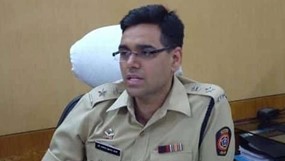
From a tempo-rickshaw driver to an IPS Officer
- Manoj started his life with a humble background, and his family was compelled to sleep on streets due to poverty.
- Despite having failed in almost all subjects in 12th standard and financial constraints, he dreamt to qualify the UPSC examination.
- To turn his dream into reality, he worked as a tempo driver and library peon, where he studied about big personalities and understood the real meaning of life.
- His efforts towards the examination bore fruits of success and he qualified the UPSC examination and was posted as an IPS officer in 2005.
Quote: “A dream does not become reality through magic; it takes sweat, determination, and hard work.”-Colin Powell, former U.S. Defense Secretary
Source:
Share the article
Get Latest Updates on Offers, Event dates, and free Mentorship sessions.

Get in touch with our Expert Academic Counsellors 👋
FAQs
UPSC Daily Current Affairs focuses on learning current events on a daily basis. An aspirant needs to study regular and updated information about current events, news, and relevant topics that are important for UPSC aspirants. It covers national and international affairs, government policies, socio-economic issues, science and technology advancements, and more.
UPSC Daily Current Affairs provides aspirants with a concise and comprehensive overview of the latest happenings and developments across various fields. It helps aspirants stay updated with current affairs and provides them with valuable insights and analysis, which are essential for answering questions in the UPSC examinations. It enhances their knowledge, analytical skills, and ability to connect current affairs with the UPSC syllabus.
UPSC Daily Current Affairs covers a wide range of topics, including politics, economics, science and technology, environment, social issues, governance, international relations, and more. It offers news summaries, in-depth analyses, editorials, opinion pieces, and relevant study materials. It also provides practice questions and quizzes to help aspirants test their understanding of current affairs.
Edukemy's UPSC Daily Current Affairs can be accessed through:
- UPSC Daily Current Affairs can be accessed through Current Affairs tab at the top of the Main Page of Edukemy.
- Edukemy Mobile app: The Daily Current Affairs can also be access through Edukemy Mobile App.
- Social media: Follow Edukemy’s official social media accounts or pages that provide UPSC Daily Current Affairs updates, including Facebook, Twitter, or Telegram channels.

